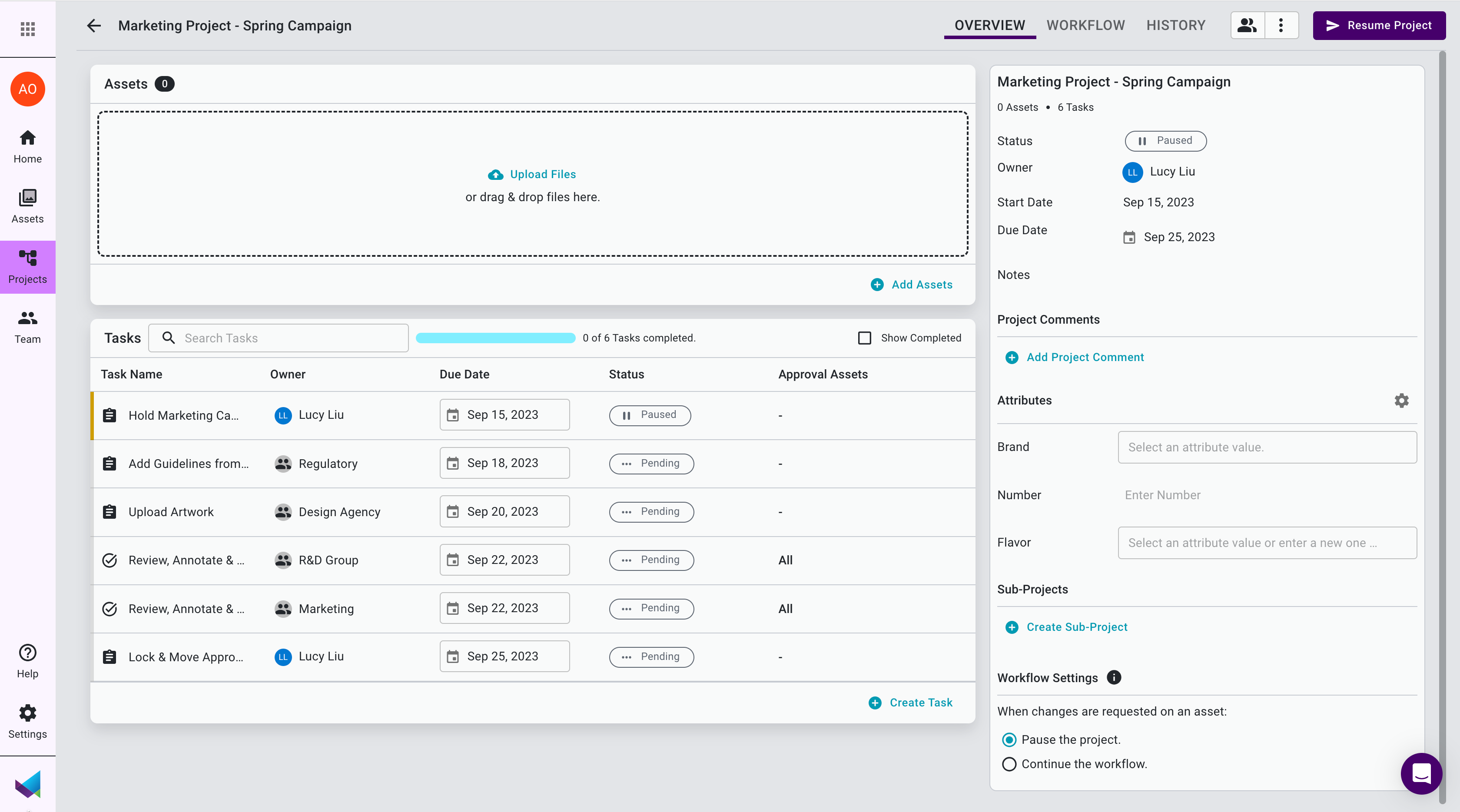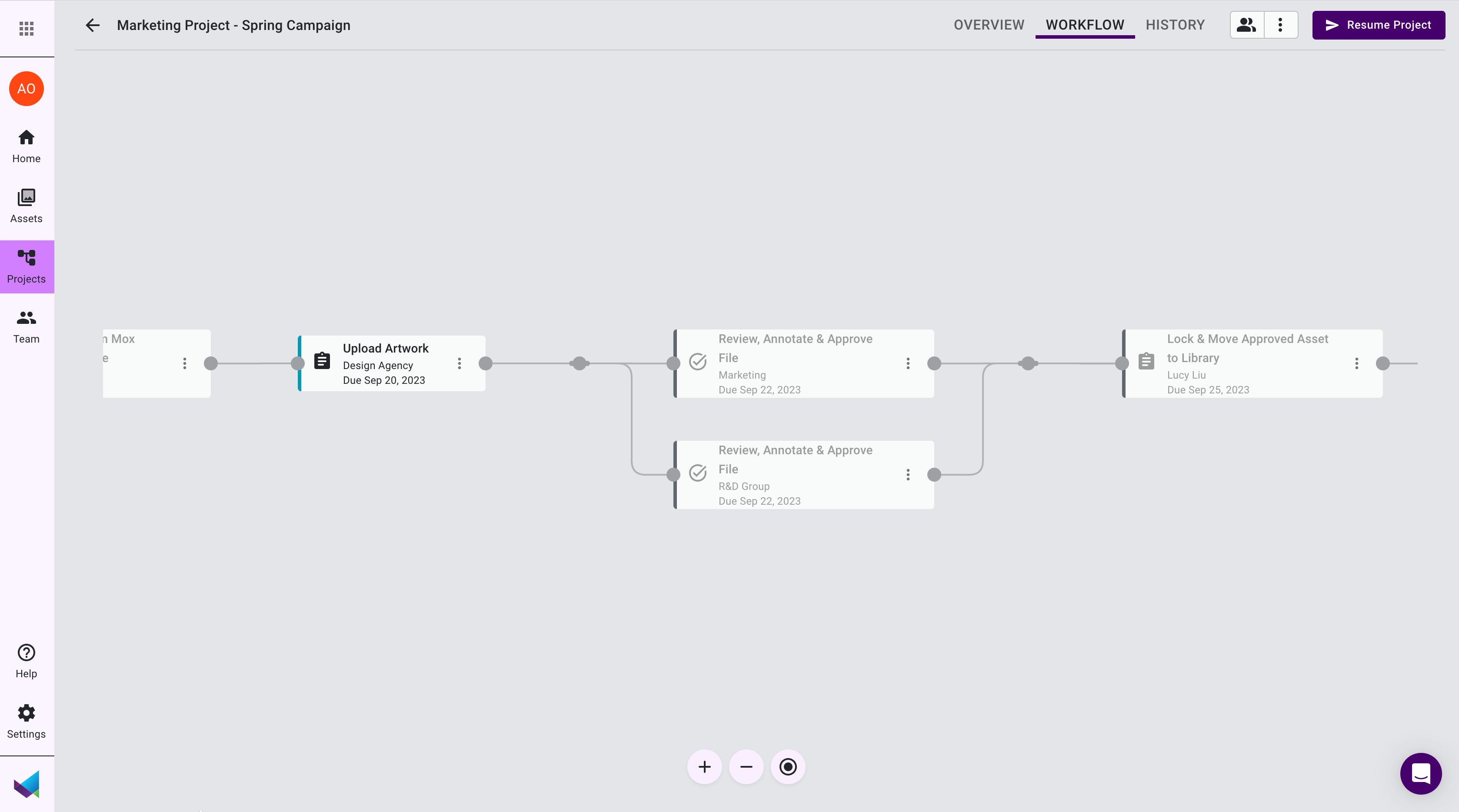Share this
How to Manage Stakeholders With Different Priorities
by Mox on September 20, 2023

When stakeholders each have different priorities, projects can easily derail, leaving teams overwhelmed and quality compromised.
In this guide, we explore the challenges that arise when stakeholders aren't aligned on project goals. We'll also guide you through how to manage stakeholders with different priorities so you can get back on track.
Table of Contents
- The Challenges of Competing Stakeholder Priorities
- How to Manage Stakeholders With Different Priorities
- Simplify Stakeholder Management With Mox
The Challenges of Competing Stakeholder Priorities
In project management, the presence of competing stakeholder priorities can pose significant challenges. These challenges can manifest in various ways, leading to consequences that affect the project's success.
1. Stalls in Project Progress
Competing stakeholder priorities often result in decision-making bottlenecks. When stakeholders have conflicting objectives or can't reach a consensus, projects can come to a standstill. This stalling of project progress can lead to missed deadlines and increased costs.
2. Lower Quality of Work
When stakeholders prioritize speed or cost savings over quality, the project may suffer from lower-quality work. Conflicting priorities can create tension between delivering a project quickly and ensuring that it meets the necessary quality standards.
3. Team Overload
Competing stakeholder priorities can lead to an excessive workload for project teams. Team members may find themselves juggling multiple, often conflicting, tasks and demands. This can result in stress, burnout, and decreased morale.
How to Manage Stakeholders With Different Priorities
Navigating the complexities of varying stakeholder priorities requires a methodical approach. Here are five key tips tailored for the artwork approval process and designed to streamline stakeholder management.
#1. Perform a Stakeholder Analysis
To achieve a successful project, both goal-setting and effective stakeholder management are crucial. Performing a stakeholder analysis helps you determine potential conflicts early and understand varied stakeholder motivations. This insight allows tailored communication strategies for different audiences.
Once you perform a stakeholder analysis, consider developing a stakeholder map. Stakeholder mapping complements stakeholder analysis by visually categorizing stakeholders into primary, secondary, and tertiary groups. This ensures key players are prioritized without neglecting secondary influencers.
Worried about the complexity of stakeholder analysis and mapping? Don't be. Even taking some time to simply jot down your stakeholders and how they fit within your processes has value.
#2. Define Your Main Project Goal
A central project goal keeps teams and stakeholders aligned amidst conflicts or changes. Beyond just aspiration, it's the project's foundation. This clear goal unifies diverse stakeholders, guiding your entire team toward the same objective.
Even if priorities shift due to market fluctuations or new opportunities, the primary goal remains unchanged. Though strategies might adapt, a constant goal ensures purposeful progress and effective decisions in the face of challenges.
#3. Learn How to Effectively Manage Conflicts
Conflicts, often stemming from varied goals, limited resources, or communication gaps, are unavoidable in a professional setting. They can emerge among team members, departments, or even external stakeholders.
It's important to understand how to effectively manage conflicts, especially when they stem from differing priorities. How do you manage conflict? You must always be willing to compromise when necessary. If a compromise will keep a key stakeholder from derailing a project's timeline, it's worth considering.
You should also know when to negotiate or stand your ground. Keep your end goal top of mind during negotiations. If you can't resolve stakeholder conflict on your own, consider reaching out to a mediator.
#4. Communicate With Stakeholders Often
Consistent communication with stakeholders is key to project success. It aligns goals, reduces misunderstandings, and identifies issues early. Transparent dialogue prevents small disagreements from escalating and aids in risk mitigation, as stakeholders often spot overlooked risks.
Regular updates build trust, ensuring stakeholders stay informed on project status. Open discussions also ease the adaptation to changing priorities, making stakeholders more receptive to shifts when they're part of the conversation.
#5. Aim for Project Transparency
Transparency in project management is a critical element that fosters trust, ensures alignment, and paves the way for successful project outcomes.
As you manage projects with multiple stakeholders, each with their own unique priorities, transparency becomes the glue that holds everyone together and ensures that everyone is marching towards the same end goal.
After all, transparency:
- Builds trust: When stakeholders are kept in the loop and are provided with clear, accurate, and timely information, it instills trust. They recognize that no hidden agendas or surprises are waiting down the road.
- Ensures alignment: With varying priorities, there's always a risk that stakeholders could be working at cross-purposes. Transparency ensures that everyone is aware of the project's objectives, status, and challenges. This alignment prevents unnecessary deviations and keeps everyone on the same page.
- Facilitates timely decision-making: Informed stakeholders can make decisions faster. When they have a clear view of the project's progress, risks, and challenges, they can provide necessary inputs, approvals, or resources promptly.
- Clarifies roles and responsibilities: Transparency helps in demystifying the roles and responsibilities of each stakeholder in the project. When everyone knows their role and how it contributes to the broader project objective, it leads to better coordination and collaboration.
Project transparency is simple with a tool like Mox. It's a powerful platform that can ensure project transparency at every stage. Here’s how:
- Workflow management tools: By allowing teams to create workflow diagrams, Mox helps in visualizing the entire project process. Stakeholders can easily understand where a project stands, what’s coming next, and how their role fits into the bigger picture.
- Artwork management tools: For projects where visuals and designs are crucial, Mox’s artwork management tools ensure that stakeholders can easily view, approve, or request changes. This prevents bottlenecks and ensures that everyone's vision aligns with the end product.
- Real-time updates: With Mox, you don’t have to wait for periodic update meetings. Stakeholders can get real-time updates on project progress, challenges, and milestones. This constant flow of information prevents misunderstandings and misalignments.
- Collaboration features: Mox facilitates seamless collaboration. Stakeholders can provide feedback, share resources, or discuss challenges without having to shift between multiple platforms. This streamlines communication and ensures that everyone is always in the loop.
Simplify Stakeholder Management With Mox
Stakeholder management can be a complex task, especially when working with various individuals or teams, each having their own priorities, feedback, and objectives.
Mox simplifies this complexity, bringing all stakeholders onto a unified platform where workflows are streamlined and approvals are seamless. Let's dive into how Mox accomplishes this.
Streamlined Workflow Creation
With Mox’s project management tools, stakeholders can visualize the entire process from inception to completion. This unified view ensures everyone knows where the project stands and how their contributions fit in.
Workflows are not one-size-fits-all. Mox recognizes this and allows teams to build tailored workflows that suit their specific needs and stakeholder dynamics.

Artwork Approval Made Easy
Mox’s packaging artwork management system is a centralized hub where all artwork versions are stored. Stakeholders can easily access, review, and provide feedback on any artwork iteration.
With Mox, the artwork approval process is iterative and transparent. Stakeholders can view changes, provide inputs, and see how their feedback was incorporated, fostering a collaborative environment.
Reduced Approval Delays
Stakeholders receive real-time notifications about project updates or when their approval is needed. This ensures timely interventions and keeps projects moving.
Managing different artwork versions can be daunting with multiple stakeholders providing feedback. Mox’s version control ensures that everyone is working on the latest version, reducing confusion and rework.
Mox offers a holistic solution to the multifaceted challenge of stakeholder management. Whether it’s visualizing complex workflows, streamlining artwork approvals, or giving project managers the tools they need to succeed, Mox provides a cohesive platform that makes stakeholder management more efficient and effective.
Easily Manage Your Approval Team With Mox
Stakeholder management can be intricate, but Mox streamlines it with customizable workflow tools, keeping stakeholders informed about roles and project tasks.
Are you ready to eliminate approval delays and elevate your stakeholder management experience with Mox? Request a demo and experience expedited approvals and enhanced stakeholder engagement firsthand.

